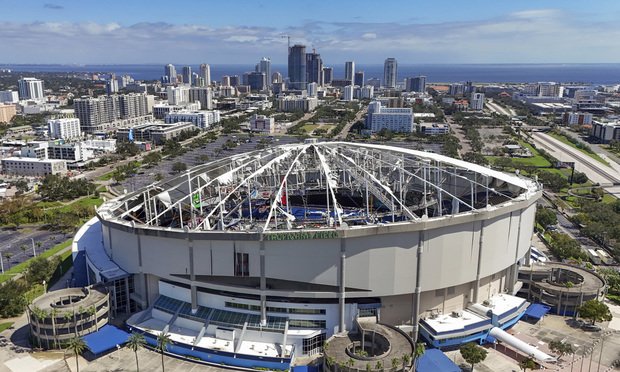 Severe convective storms can unleash damaging wind and hail that are a major threat to properties, particularly roofs. Here, the roof of the Tropicana Field is damaged the morning after Hurricane Milton hit the region, Thurs., Oct. 10, 2024, in St. Petersburg, Fla. (Credit: Mike Carlson/AP)
Severe convective storms can unleash damaging wind and hail that are a major threat to properties, particularly roofs. Here, the roof of the Tropicana Field is damaged the morning after Hurricane Milton hit the region, Thurs., Oct. 10, 2024, in St. Petersburg, Fla. (Credit: Mike Carlson/AP)
One of the most striking images of Hurricane Milton was how the storm destroyed the domed roof of Tropicana Field, the home stadium of the Tampa Bay Rays.
Recommended For You
Want to continue reading?
Become a Free PropertyCasualty360 Digital Reader
Your access to unlimited PropertyCasualty360 content isn’t changing.
Once you are an ALM digital member, you’ll receive:
- Breaking insurance news and analysis, on-site and via our newsletters and custom alerts
- Weekly Insurance Speak podcast featuring exclusive interviews with industry leaders
- Educational webcasts, white papers, and ebooks from industry thought leaders
- Critical converage of the employee benefits and financial advisory markets on our other ALM sites, BenefitsPRO and ThinkAdvisor
Already have an account? Sign In Now
© Touchpoint Markets, All Rights Reserved. Request academic re-use from www.copyright.com. All other uses, submit a request to [email protected]. For more inforrmation visit Asset & Logo Licensing.







